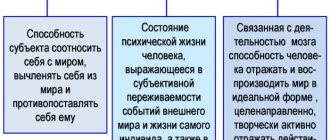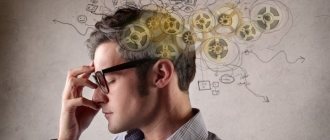Holotropic Breathwork
Yoga classes usually begin with an explanation of the principles of proper breathing: students are told how to inhale and exhale so that your next change of position does not end with shortness of breath and a red face stuck on the floor.
The technique of holotropic breathing is associated with its excess. In the 60s, American scientists were absorbed in the ideas of altered states and their influence on humans - either in order to create super-soldiers, or in attempts to create new X-Men. The result of such research was the invention of LSD and other substances, for which modern ravers can thank them. But after a series of unsuccessful experiments (there were no explosions of laboratories or the creation of monsters - just the experiments did not give any results, except for the experimental subjects ironing the carpet), the substances were finished, and psychologist Stanislav Grof came up with this very holotropic breathing, based on the history of breathing techniques.
This method is based on oversaturation of the blood with oxygen and hyperventilation of the lungs. The instructor stands above you and tells you to breathe quickly, and now deeper, and now quickly and deeply. And you inhaled so much that, in fact, you are poisoned by your favorite oxygen. Continuing to follow the trainer's instructions, you move from a state of oversaturation to oxygen starvation. And then the “miracles” begin. The brain, experiencing a lack of oxygen, loses control over itself, and the subconscious begins to sketch out the most emotional impressions from the past. And your “teacher” heals your sick mind while you are suffocating. It is not known how effective this is, but after the procedure you will definitely feel better - mainly due to the fact that you can now breathe normally.
Some people simply lose consciousness or feel dizzy after these exercises, and some are literally reborn and forget about their problems forever (perhaps these are the same people who were waiting for a collision with the planet Nibiru). But everything can go according to the worst scenario: it is not difficult to guess that if cells, like any living creature, lack oxygen, then they may soon die, and if brain cells die, then very soon you will begin to drool while sitting at table, or you’ll spend all day watching a cartoon about Dasha the Explorer.
Techniques related to oxygen fasting are used in other areas of life. For example, during sex, someone likes to be choked (you can read more about this and other tough lovemaking in our article). You could also get acquainted with such an altered consciousness at school. I remember how we had a common progressive “dog high” technique, when after a few squats you were choked by an experienced high school specialist and you passed out or experienced a minute of unconscious delirium. I still don’t understand the people who agreed to this then.
Sensory deprivation chambers
A small example from popular culture: in the first season of the series Stranger Things, there was a moment when Eleven’s pool was filled with water, a large amount of salt was poured into it, and then a “helmet” was put on the girl, and after that she wandered through the palaces of the mind. It was a homemade sensory deprivation chamber.
Today, such procedures, also called “floating,” can be performed in special institutions equipped with such capsules, or in yoga centers. This camera was invented in the 50s by Dr. John Lilly. At that time, he was studying the human brain, or rather, trying to understand where it gets its energy from. Lilly tried to create conditions of complete isolation in order to make observations of the behavior of the brain - such a camera became the best option for his experiments.
What is a modern sensory deprivation chamber like? In general terms, this is a container of water at room temperature into which a person is immersed. The water has a very high salt content so that the body can float calmly on its surface - this creates a feeling of weightlessness. The chamber is protected from light and soundproofed. It turns out that you are immersed in complete darkness and “floating” there, when even tactile sensations are dulled, and you only hear your own breathing and how your stomach growls if you forgot to have a snack.
Some compare it to the womb, others talk about space. And where can we expect altered states? After all, I don’t experience hallucinations while lying on the couch after work. It's again about the poor brain, for whom extreme situations are created. Your senses cannot read the information, and your brain, like a blind gunner, begins to fire projectiles in different directions, hoping to at least clarify something. Just as a bat receives information about the world around it by shooting ultrasonic waves, your skull buddy tries to understand what is happening by releasing uncontrollable images. But mostly it will be a way of relaxation for you after a hard day. Because here you lie and really do NOTHING.
Not everyone reaches the state of a sick dreamer, but a couple of crazy ideas or pictures may pop up in your head. At least this method is relatively safe for the body. It might just cause a panic attack if you're claustrophobic or can't swim. Oh yes, don’t try to scratch your eyes while you’re lying in this capsule—salty water will be perceived negatively by your retina. Also, various fresh scratches or wounds can remind you when you find yourself in the water.
Hallucinogens
Food poisoning sucks. All the valves in your body instantly break down, and you begin to gush for several hours with short breaks for showers. But food poisoning can also cause hallucinations if you eat the wrong mushrooms or berries, for example. But there are naturalists who deliberately eat the wrong plants.
This practice goes straight back to ancient times, when our ancestors, due to the lack of other entertainment or as an experiment, tried to eat everything. And one day they realized that some plants had an unusual effect, and they began to use the conditions caused by these leaves and mushrooms in their rituals (I’m sure that someone simply continued to use it purely for personal recreational purposes). The best known members of this class are psilocybin mushrooms, which produce a state similar to an LSD trip. Pelevin in his book “Generation P” described in sufficient detail what happens to a person who eats mushrooms (it all ended with the advertising concept for “Parliament” cigarettes invented by the hero).
“The highest form of self-realization of the fly agaric as a mushroom is an atomic explosion - something like a luminous immaterial body that some advanced mystics acquire. And people are simply an auxiliary life form that the fly agaric uses to achieve its highest goal, just as people use mold to make cheese.”
But while Russians know enough about mushrooms (just in case, I’ll say that psilocybin is included in the list of narcotic drugs), then not so much about vines. I'm talking about ayahuasca - a drink of ancient Indian tribes made from a decoction of a special vine. It was used for mystical rituals associated with changing consciousness and immersion in the secrets of ancestors, as it causes powerful hallucinations. Nowadays, in some places similar rituals are also held for tourists.
If in Peru this drink is considered a national treasure, and UNESCO has included in the World Heritage List special songs of shamans that accompany the use of this potion, then in our country, as in many other countries, ayahuasca is prohibited. In 2020, the artist Maxim Gert, who was planning to smuggle a liter of ayahuasca across the border, was detained - 11.5 years in a maximum security colony.
Altered states of consciousness caused by natural causes
The most natural and normal of this group is sleep.
Sleep as a form of altered consciousness
Yes, yes, this is also an altered state of consciousness. True, for a long time it was not considered such, but was viewed as simply rest, during which both the brain and the entire body are passive. And dreams were considered akin to memories or fantasies.
But serious scientific research has proven that sleep is not associated with loss of activity; during it, our body functions and the brain is quite active. We do not lose consciousness, it simply changes, creating illusory images from pieces of real events, persons, and objects that a person has in his memory.
This means that sleep is an altered state of consciousness, although it differs from other similar phenomena. But it can also be considered a reaction to changes in the biochemical environment of the brain. In response to fatigue or the rhythm of sleep and wakefulness that has been formed over the years, a special protein compound is produced in the neurons of the brain - melatonin, which is also called the sleep hormone. All higher mental functions are inhibited, the activity of the neocortex (the upper part of the cerebral cortex) decreases, and images of the subconscious, penetrating from the depths of the psyche, change the content of our consciousness. The mechanism of sleep is much more complex, but I will not dwell on it in detail here.
Painful states of altered consciousness
Sleep is a normal and even necessary state of our body. But in extreme situations, when the nervous system experiences severe stress, overload or, for example, exposure to high temperature, various forms of ASC can also occur.
- Delirium is a painful condition in which a person talks a lot and incoherently, talks about strange things or talks with absent people and is not aware of it. Often he does not even respond to comments or questions from the real world.
- Hallucinations are visions, images generated by a painful state of the body or extreme environmental conditions. Thus, hallucinations can occur in a state of sensory deprivation, that is, in a person deprived of the usual channels of perception, for example, locked in a cramped dark space in absolute silence.
- A stunned state of consciousness that occurs due to serious illness, poisoning and traumatic brain injury. This ASC manifests itself as lethargy, delayed reaction, poor spatial orientation, or indifference to everything.
With mental illnesses, there is also a change in consciousness and sometimes quite severe mental deviations. But they do not belong to ASC, since this phenomenon concerns only mentally normal people.
Shamanic rituals
We learned a little about the shamans of the Amazon, but we also remember that Russia also has its own people with tambourines, and not only in Russian song ensembles. We are talking about shamans of Siberia and other remote parts of Russia. Now they even have their own organizations and bosses. The demand for enlightenment is growing, which means that the number of wizards who can offer their services is growing, so that on the shore of a lake among deserted expanses they can shake herbs over your head, make sounds in their throats and bill you for the services rendered. Of course, many of them will simply be actors of a local youth theater with a suitable appearance and skills of fooling.
Real shamans don’t care about the problems of “white people”. The deer getting sick is a problem, the wife can’t give birth is another problem, and stress due to lack of praise from superiors is a lesser problem.
But there are also professional commercial shamans who perform rituals for those who wish. The bulk of people who turn to them are women who cannot get pregnant, people with diabetes and cancer, says Artur Tsybikov, Deputy Supreme Shaman of Russia. I’m not sure that the tambourine can cope with cancer, but no one has canceled the placebo effect. These serious rituals cost about 15 thousand rubles.
Some of them are carried out for help, while others are carried out to achieve an altered state. But if in South America additional substances are used for this, then the traditions of Russian shamans involve going beyond the borders of this world through dancing, throat singing and the rhythmic sounds of a tambourine. The shaman invades the pure consciousness of a person while his brain is focused on monotonous sounds and movements.
But not all shamans are satisfied with citizens turning to them for help: some see the problem deeper and want to influence it with decisive action. Thus, a shaman from Yakutia, Alexander Gabyshev, moved towards Moscow in early March to “drive out demons from the Kremlin.” It seems to me that this is the plot for the anime that we deserve.
Altered state of consciousness from a psychological point of view
Since various mystics, psychics and representatives of exoteric esoteric teachings talk a lot about this phenomenon, it is worth turning to the point of view of scientific psychology. But before we talk about an altered state of consciousness, we must first understand what consciousness is in general, that is, normally. And this is not so simple, because there is no clear definition of it, and our consciousness has more secrets and mysteries than objective knowledge about it. Actually, the same can be said about the brain, which produces this consciousness.
Normal consciousness: what is it?
The clear consciousness of a healthy, awake person is manifested in reflecting reality, comprehending it, planning actions and controlling behavior. The main feature of clear consciousness is adequacy, that is, compliance with the reality of which it is a reflection. Images and thoughts that arise in normal consciousness do not contradict reality and allow one to navigate it and interact with the outside world.
For example, if I see a chair standing against the wall, then most likely it is a chair and not an alien monster. Both everyday experience and the logic of thinking tell me this. I can sit on this chair, move it, and it will remain a chair. But if a toad with a rooster’s tail comes out of the boss’s office instead of him, then most likely there is something wrong with my consciousness.
The adequacy of perception and assessment of events, characteristic of clear consciousness, normally coexists with imagination and vivid images of fantasy. After all, this process of creating new images, including those that never existed in reality, is completely conscious, and we perfectly distinguish the products of our invention from real objects. What if we don’t differentiate? Then we are talking about an altered state of consciousness.
What is altered consciousness like?
From a psychological point of view, ASC is a change in mental activity associated with the brain’s adaptation to non-standard (abnormal) external or internal conditions. That is, a change in the environment, including the biochemistry of the brain, causes a reaction in the form of a change in consciousness. This definition may seem strange, because we all exist in a constantly changing world. But this does not mean that every new event leads to changes in our psyche.
ASCs are caused by specific phenomena and circumstances that have a serious impact on the brain. They are characterized by the fact that the usual, standard set of mental reactions does not work under these conditions, and so a failure occurs. Thus, the phenomenon of ASC occurs in a state of passion, when a person is faced with a sudden threat to his life or those close to him. Sudden danger leads to the activation of defense mechanisms and the shutdown of rational thinking, since there is no time to think. A person begins to act and sometimes does almost impossible things: overturns a truck with his hands to save a child, jumps over a four-meter fence, rushes into a raging flame and comes out unharmed, etc. But then he doesn’t remember anything and is unable to explain how he managed do something like this. This is one example of an altered state of consciousness.
Temporary change (stupidity) occurs quite often, and people hardly pay attention to it. For example, short-term inhibition occurs when exposed to different stimuli, when you have to simultaneously respond to different significant stimuli. We can say that our brain “freezes”, unable to immediately and quickly switch from one task to another. A short-term occurrence of ASC occurs in situations of severe fatigue, lack of sleep or severe emotional experiences.
But of particular interest are serious, noticeable to the naked eye, deviations in mental activity, which, nevertheless, do not belong to pathologies. The manifestations of such altered states of consciousness are very diverse, as are the reasons that give rise to them. But there are also general signs by which we can determine the occurrence of ASC in a person.
- Subjectivity of experiences when other people do not see or feel the same as an individual with ASC (hallucinations, visions, illusions).
- The inadequacy of the images of consciousness, that is, the discrepancy between their reality.
- As a consequence of this, inappropriate behavior, since reactions to subjective reality do not correspond to objective reality. For example, mistaking a large stone for a monster, a person runs away from it in horror. Or he drives away the devils he sees in a state of alcoholic delirium (delirium tremens).
- Uncritical assessment of one's judgments and behavior - a person in a state of distorted consciousness accepts his visions as reality and does not feel any contradiction with common sense.
The simplest and, I think, well-known example of deviant behavior in ASC is alcohol intoxication. It is a consequence of the brain’s reaction to ethyl alcohol poisoning. This manifests itself in a decrease in the activity of the frontal lobes of the brain, which are responsible for rational control.
Depending on the reasons causing the altered state of consciousness, there are 3 types of this phenomenon:
- ASC that arises spontaneously, that is, naturally.
- Conditions caused by psychotropic drugs.
- Changes in consciousness as a result of the use of various psychotechniques.
Despite the various factors that give rise to ASC, these conditions have much in common, but there are also very significant differences, including in terms of consequences. Therefore, it is worthwhile to dwell on each type in more detail.
Lucid dreaming
Have you ever had such moments when you realized that everything around you is a dream, which means you can do whatever you want? I hope that if this happened, then you were actually asleep and didn’t start creating chaos at the bus stop. Science calls this state lucid dreaming. You suddenly register a cheat for invulnerability in your own reality and enter God mode. You adjust the world to suit you, launch fireballs or seduce any beauty from your dreams, because she is also part of your subconscious.
Such things are not only useful as entertainment, but in some cases they also help to cope with various problems that are often projected in the head in the form of dreams. For example, every night you see the same nightmare, where Valery Meladze in fish scales runs at you with a chainsaw, singing Eldzhey’s songs. This horror doesn’t let you sleep, every time you wake up in a cold sweat, while the voice in your head finishes singing something about minimal. If you control your dream, you will be able to interrupt it, understand that this is all just fiction, and try to logically complete this story - you will no longer be afraid of the nightmare.
Entering such states can be done in different ways. This is done over time, after hard training. Different methods use different means: self-hypnosis, additional sound, conditioned signals, plants and drugs.
There is no 100% result, since much will depend on your suggestibility, concentration and how lightly you sleep in general (some people don’t even remember their dreams). But the basis is the same everywhere: in a dream you need to understand that it is a dream. It would seem that this is quite simple - in the morning all the dreams seem so crazy that it is immediately clear that this is not reality. But, firstly, in a dream the brain plays by its own rules, it does not think about another reality. Secondly, some dreams are too similar to real life, especially if something very good or very bad happens there - rational thinking is overshadowed by emotions. However, there are several universal tips for determining sleep: try to remember how you ended up in this place, look in the mirror or try to turn on the light in the room.
If you have tried hundreds of times to induce lucid dreams, but only succeeded in inducing snoring, then I advise you to watch the movie “Waking Life.” He clearly demonstrates this phenomenon and tells how to deal with it.
Why is this necessary?
As already mentioned, conditions have a strong influence on our lives. They literally define it. And by the way, our memory depends on them. You will remember even the smallest details of any joyful event when you experience joy again.
If you have read about such a direction in psychology as neurolinguistic programming, then you know about the anchoring technique. It represents the creation of a strong conditioned reflex connection.
That is, using this technique, you can create an experience that will arise as a reaction to a stimulus. For example, having “anchored” your partner to a feeling of tenderness by touching the shoulder, he will experience it every time, as soon as you repeat the movements.
In the same way, you can independently replace a negative experience with a positive one. Agree, when the only thoughts in your head are about how bad everything is and that others are more fortunate, it is unlikely that anything good will happen to such a person. And even if it does, he risks simply not noticing it.
This is why it is so important to make adjustments to consciousness, thinking and behavior. So that they not only help, but also do not create additional obstacles to the realization of needs and desires.
Only then is it possible to change your attitude towards life and its quality. Saturated directly with the emotions and events that you want.
Hypnosis
Your eyelids become heavy, you want to sleep, your body is relaxed. This is roughly how hypnotists work in movies. A mandatory attribute in this case is a pendulum in the hands of this specialist. Then the suggested object with a glassy look gets up and goes to do what the master ordered.
In real life, the abilities of hypnosis are more limited. A modern hypnotist, or rather a hypnotherapist, works with the patient’s subconscious in order to solve his mental problems. That is, this is one of the types of psychotherapy. The process of hypnosis is similar to the introduction of trance among ancient tribes (but not so loud and large-scale) using certain monotonous actions, keywords and sometimes suitable sound accompaniment. The patient is brought into a state of absolute peace, relaxation, and abstraction, and then the hypnotherapist hacks the person’s operating system and enters developer mode. Of course, everything is not so serious, but he can perform certain manipulations with the consciousness of a gullible patient.
But this is if the experimental subject is suggestible, is disposed to hypnosis and believes that he needs it and it will help him. Hypnosis is not a one-size-fits-all therapeutic tool. Rather, it is a trick for the brain that a person who is delighted with a rabbit taken out of a hat will take seriously, believe in “magic”; and a lover of revelations will always find a double bottom in this hat.
If you are afraid that after a hypnosis session you will wake up on the street without clothes and realize that your gold teeth are no longer yours, then you can try self-hypnosis. The banal technique “relax and count to ten” is also one of the types of self-hypnosis, when you concentrate your attention on mental counting while you experience the peak of surging emotions. This technique also helps with special phrases, with the help of which you “code” yourself and make fine tuning. But from the outside, such things look scary. In some cases, self-hypnosis is used to relieve pain. I recently read in a book how one of the characters experienced post-operative pain: he gave himself the attitude that it was impossible to cope with the pain “entirely”, but he could easily experience every single second of it, that is, he divided the pain into parts and dealt with it in this way . We experienced something from this series in our childhood: “A spoon for mom, a spoon for dad.”
Dream state
For our further understanding of altered states of consciousness, let us turn to the consideration of the most frequently occurring altered state - dreams at night. Modern sleep research has shown that each of us spends about 20% of our total sleep time in a special state, the so-called first stage, in which brain waves indicate dreamlike mental activity, whether we remember it afterward or not.
In Fig. 2 demonstrates significant changes in the functioning of the subsystems of consciousness that occur during sleep at night. Uneven lines indicate that the operation of a particular process differs significantly from its operation in the ordinary state of waking consciousness.
Rice. 2. The main variations in the functioning of the subsystems of consciousness during a night dream
In order to enter sleep, we must go to sleep and remain in this state, in other words, we must induce in ourselves an altered state of consciousness. This is usually accomplished by reducing the level of activity of exteroception and interoception to very low values. For example, we turn off the lights and close our eyes, turning off the visual flow of information. We also relax the body and make no movements, eliminating the interoceptive flow of kinesthetic input. Thus, in Fig. 2 indicates this reduced flow of data from extero- and interoceptors in the form of small arrows.
Further, it is known that there is a very active inhibition of incoming signals reaching our receptors. Therefore, the processing of incoming information in the illustration is shown compressed in the center. If you deliberately try to stimulate a person who is sleeping, but not strongly enough to wake him up, and then wake him up and ask him to talk about the dream, you will find that most stimuli fail to penetrate the dream world. And the few that do get through are usually highly distorted and easily woven into the unfolding dream. Calling the name of the sleeping person, for example, can transform in a dream into another character asking the sleeping person about the state of his health.
Memory also functions differently in the dreaming mind. In the waking state, we usually know when we are retrieving information from memory—there is a nonverbal quality, “This is about memory,” attached to the information being retrieved. This quality disappears in dreams. The generally accepted view of dreams is that all objects in the dream world are constructed from images contained in memory, but despite this, dream vision is experienced as perception and not as remembering.
Likewise, our sense of identity, emotions, and information-evaluation processes operate differently, so that the dream appears to be that of someone else with different emotional responses and thinking styles. What appears reasonable by sleep standards may be unacceptable by waking standards. The sense of space-time changes dramatically: instead of placing your experience in the "real" context of lying on a bed at night, you may find yourself among the palm trees of an oasis in the next century.
Consider another common characteristic of dreams: dreams are usually experienced as something that simply happens to us, rather than as something that appears to be our active creation. Who creates this world and all the actions in it? Where does the environment and plot come from? How do the different inhabitants of a dream know when to appear in it?
The subconscious mind is believed to be responsible for the intelligent and active creation of dreams, since the dreamer denies responsibility. Of course, this is not the best explanation, but it is all we have for now. And this serves as a good reminder of how little we know about our own consciousness.
Finally, notice that the process of motor response, as well as the process of processing external information, is depicted compressed in the center. This reflects the fact that in dreams you perform all kinds of physical actions with what you consider to be your physical body, although to the outside observer you lie motionless. Modern research has shown that neuronal movement signals are sent to muscles during sleep in the same way as during wakefulness. If you dream that you are raising your hand, then all the necessary signals to carry out this action are sent to your hand. But the fact is that during night sleep, muscle paralysis is activated. Inhibitory signals are sent down the spinal cord and then to the muscles themselves to keep them still. This is quite understandable: it would be extremely dangerous to make physical movements while our consciousness is in the dream world. The main exception to this rule is our eyes, which move according to what is happening in our sleep, just as they would when awake. Braking is not necessary here, since there is no danger in the fact that our eyes make movements while we sleep.
Lack of feedback from the outside world during sleep
I already said above that the state of consciousness is a dynamically interacting and stabilized system. The everyday state of wakefulness is stabilized mainly through two main circuits - through a feedback loop with the outside world through exteroceptors and through a feedback loop with the inner world, with the body, through interoceptors. In the dream state these main stabilizing circuits disappear almost completely. In your dream, you can raise your hand and move a giant boulder weighing several tons. This is because you are not receiving any input from the interoceptors in your hand that would conflict with your idea of doing the action. There is also no direct perception through your physical eyes that would tell you that no boulder exists, which in turn would again prevent you from performing this action. The only feedback here is feedback from your body image, rather than from what physically exists. Thus, any idea has more power to influence the process of constructing “reality” - your conscious experience in the dream state, since there are almost no incoming signals from a solid and regular external reality to which your internal idea must relate.
We have to accept the fact that, as a rule, a dream is absolutely real while it happens (I am excluding from consideration here the phenomenon of lucid dreams, in which you are aware that you are dreaming). In my opinion, dream reality is “real” to the same extent as everyday reality, and sometimes even more “real.” According to theories I have previously developed (Tart, 1987), the process of modeling the world during dreams is fundamentally the same as in the waking state. So where did the idea that sleep is something imaginary come from? Here we need to turn to the nature of our experience.
Three categories of experience
In general, I can say that most of my experience can easily be placed into three general categories, which I will call "worlds" (we could simply call them "states of consciousness", but the emphasis here is on their obvious “externality”). I spend most of my life in World 1. It represents a very strict set of experiences: its reality is presented as something governed by some immutable laws, so that most situations cannot be directly changed by my desires or will alone. I am forced to perform actions in accordance with laws that are perceived as external to me. For example, if I want to move a heavy boulder, I will need a long lever system or a special lift. In addition, I will have to exert a lot of muscle effort.
Waking Consciousness
Although World 1 is extremely strict, it is also very reliable. The boulder will not move on its own or do anything unexpected until special events occur, such as the use of a lifting system or an earthquake. For normal communication needs, I, like other separately existing entities perceived by me, call the reality of the experience of this first World “waking consciousness”.
Dreamless sleep
The Second World of my empirical reality occupies the smallest part of my lived time, if we consider it from the standpoint of my direct experience, but the second largest part of the time, if we look at it from the standpoint of the ordered experience of the reality of World 1. Usually, my direct experience of contact with World 2 is expressed in the absence of something whatever it is, except for the feeling that an indefinite amount of time has passed, which arises at the very end of the experience of the second World. By World 1 standards—to the extent that they apply at all beyond their empirical dimension—World 2 occupies almost a third of my life. When I am in the first World, I call the second World “dreamless sleep.” When I'm in the Second World, I don't call it anything.
Dreams
The experienced reality of World 3 is in many ways similar to that of World 1. I see, taste, touch and smell, feel pleasure and pain, I think about things and come to conclusions, I plan and take actions. The Third World occupies only a small part of my total experience by the standards of World 1, but in its own terms its reality can be short or quite long. External visible laws and regularities working in the first World appear here too, but usually they are much more free and optional. Sometimes I can move a boulder just by thinking about it, and sometimes it can move on its own for no apparent reason. Sometimes I find principles or laws that only work in the Third World. For example, I can directly realize an act of my will in the reality of World 3. But this special mental act must be correctly performed, moreover, it does not have any influence on World 1.
When I experience World 1, I usually refer to my experiences in World 3 as “dreams” or “dreams.” In the experience of World 3, everything looks as real as in any other world I have experienced.
Meditations
A classic of immersion in altered states. For some, this may seem like a naive activity that will only lead to swelling of the lower half of the body. Indeed, real “nirvana” or at least some result is not easy to achieve. When I tried to meditate, it all ended with my nose itching, some annoying fly appearing, my leg going numb, and now I’m off to the store for beer.
Despite the apparent simplicity of this method, it is very difficult to achieve the desired result. This is largely due to the frivolous approach: it is not enough to just sit in the lotus position, close your eyes and hum to yourself. This is not meditation - this is procrastination.
There are various meditation techniques, the names of which contain such terrible words: vipassana, sahaj marg and kundalini. But most of them involve focusing your attention on your breathing, on each inhalation and exhalation, on the flutter of your nostrils and the air that touches your lips. This helps you break away from reality, your attention will be focused on one simple action (a similar scheme, as you understand, is present in many techniques for inducing an altered state).
Achieving something higher, transcendental enlightenment or something like that is given to few, and those who have achieved this can lie or convince themselves of something that did not happen. But meditation is a good way to relax and pacify your inner demons if they decide to ruin your hot afternoon.








